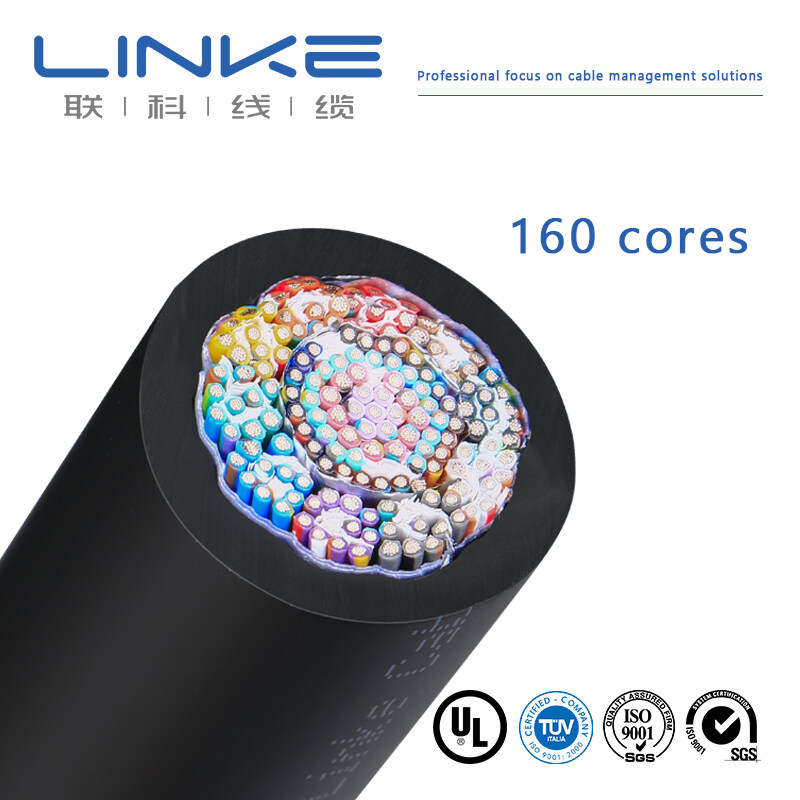Email format error
Email cannot be empty
Email already exists
6-20 characters(letters plus numbers only)
The password is inconsistent
Email format error
Email cannot be empty
Email does not exist
6-20 characters(letters plus numbers only)
The password is inconsistent

News at Linke
News from National Cable And Wire Manufacturing Company.

Navigating the Wires: Understanding Semiconductor Equipment Control Cables
Introduction:
In the intricate web of semiconductor manufacturing processes, there exists a silent yet indispensable component: semiconductor equipment control cables. These cables, often overlooked amidst the cutting-edge machinery they serve, are the lifelines of semiconductor fabrication facilities. In this article, we delve into the world of semiconductor equipment control cables, understanding their significance, exploring their diverse types, and uncovering their pivotal role in ensuring the seamless operation of semiconductor equipment.
Understanding Semiconductor Equipment Control Cables:
Semiconductor equipment control cables, in their essence, are specialized wires designed to facilitate communication, power transmission, and signal processing within semiconductor manufacturing equipment. They form the intricate nervous system of semiconductor machinery, enabling the seamless flow of data and power necessary for the fabrication of microchips and electronic components.
The importance of semiconductor equipment control cables in semiconductor manufacturing processes cannot be overstated. These cables serve as the conduits through which vital signals and power are transmitted, ensuring precise control and coordination of semiconductor equipment functions. Without them, the intricate dance of semiconductor fabrication would come to a grinding halt, highlighting their indispensable role in the industry.
Role in Ensuring Smooth Operations:
At the heart of semiconductor manufacturing lies the imperative of smooth operations. Any disruption or inefficiency can lead to costly downtime and compromise the quality of semiconductor products. Semiconductor equipment control cables play a pivotal role in ensuring the smooth operation of semiconductor equipment by providing reliable connectivity, efficient power transmission, and accurate signal processing.
Critical Components in Equipment Functionality:
Semiconductor equipment control cables are not merely passive conduits; they are critical components that directly influence equipment functionality. Whether transmitting high-voltage power to essential components or relaying sensitive sensor data for precise control, these cables form the backbone of semiconductor equipment operations.
Impact on Efficiency and Reliability:
Efficiency and reliability are paramount in semiconductor manufacturing. Semiconductor equipment control cables contribute significantly to both aspects by minimizing signal loss, reducing electromagnetic interference, and ensuring consistent power delivery. Their robust construction and adherence to stringent quality standards enhance equipment reliability, reducing the risk of unexpected failures and production interruptions.
Ensuring Safety Standards Compliance:
In addition to functionality, semiconductor equipment control cables must comply with stringent safety standards to ensure the well-being of personnel and the integrity of semiconductor manufacturing facilities. Proper insulation, shielding, and grounding are essential features that mitigate the risk of electrical hazards and ensure compliance with industry regulations.
Types of Control Cables in Semiconductor Equipment:
Semiconductor equipment control cables encompass a diverse array of types, each tailored to specific applications and requirements within semiconductor manufacturing processes. Understanding the characteristics, functions, and applications of these control cable types is crucial for optimizing semiconductor equipment performance.

Overview of Control Cable Types:
1. Power Cables:
Power cables form the backbone of semiconductor equipment power distribution systems, delivering electrical energy to various components such as motors, heaters, and power supplies. These cables are characterized by their voltage and current ratings, insulation materials, and heat resistance, ensuring safe and reliable power transmission.
2. Signal Cables:
Signal cables are tasked with transmitting sensitive analog or digital signals between different components within semiconductor equipment. Whether conveying sensor data, control signals, or feedback information, signal cables must exhibit high transmission speeds, low noise levels, and compatibility with equipment interfaces to maintain signal integrity and accuracy.
3. Communication Cables:
Communication cables facilitate data exchange and control between semiconductor equipment and external systems such as programmable logic controllers (PLCs), supervisory control and data acquisition (SCADA) systems, and computer networks. These cables adhere to specific communication protocols (e.g., Ethernet, RS-232) and are designed to withstand environmental factors while ensuring reliable data transmission over long distances.
Characteristics and functions:
Power Cables:
Power cables are characterized by their robust construction, capable of withstanding high currents and temperatures without compromising safety or reliability. They often feature insulation materials such as PVC, XLPE, or silicone rubber, providing excellent electrical insulation and mechanical strength.
Signal Cables:
Signal cables prioritize signal fidelity and integrity, employing shielding techniques such as foil, braid, or twisted pair configurations to minimize electromagnetic interference (EMI) and radiofrequency interference (RFI). High-quality conductors and insulation materials ensure low signal loss and distortion, facilitating accurate data transmission even in demanding semiconductor environments.
Communication Cables:
Communication cables feature specialized designs optimized for data transmission, incorporating twisted pair, coaxial, or fiber optic configurations depending on the application requirements. They are equipped with connectors compatible with industry-standard interfaces, facilitating seamless integration with semiconductor equipment and external systems.
Applications of Control Cables in Semiconductor Equipment:
The applications of semiconductor equipment control cables span the entire spectrum of semiconductor manufacturing processes, from wafer fabrication to packaging and testing. Understanding how these cables fulfill specific functions within semiconductor equipment is essential for optimizing performance and efficiency.
Power Cables:
Power cables are instrumental in distributing electrical power within semiconductor equipment, powering critical components such as motors, heaters, and power supplies. They are engineered to handle high currents and voltages while ensuring minimal power losses and heat dissipation. Power cables play a vital role in maintaining equipment uptime and productivity, powering essential processes throughout the semiconductor manufacturing workflow.
Signal Cables:
Signal cables serve as the communication lifeline within semiconductor equipment, facilitating the transmission of sensor data, control signals, and feedback information. They enable precise control and monitoring of semiconductor processes, ensuring optimal performance and quality. Signal cables are utilized in various applications, including temperature sensing, pressure monitoring, motion control, and error detection, contributing to the overall efficiency and reliability of semiconductor equipment operations.
Communication Cables:
Communication cables enable seamless connectivity between semiconductor equipment and external systems, facilitating data exchange, remote monitoring, and control. They are essential for integrating semiconductor equipment into larger manufacturing networks, enabling real-time data access and analysis. Communication cables support diverse communication protocols, such as Ethernet, Modbus, Profibus, and DeviceNet, ensuring compatibility with a wide range of industrial automation and control systems.
Conclusion:
Semiconductor equipment control cables are the unsung heroes of semiconductor manufacturing, playing a critical role in ensuring the smooth operation, efficiency, and reliability of semiconductor equipment. From power distribution to signal transmission and communication, these cables form the backbone of semiconductor fabrication facilities, enabling precise control, monitoring, and automation of semiconductor processes. By understanding the importance, types, and applications of semiconductor equipment control cables, semiconductor manufacturers can optimize equipment performance, minimize downtime, and enhance overall productivity in an increasingly competitive industry landscape.

